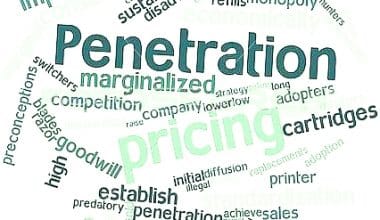Do you know an RFP is an important document for every project management? There are some vital things to know about this RFP, so if you want to know what it entails, read on!
What Is an RFP?
An RFP is a business document that outlines a project, requests proposals for its completion from competent contractors, and announces the project. RFPs are the preferred method of project initiation by the majority of organizations, including many governments.
When employing an RFP, the organization asking for bids is in charge of assessing the viability of the offers received, the financial standing of the companies submitting bids, and each bidder’s capacity to carry out the project.
Complex projects, which frequently need a lot of subcontractors, are typically handled using RFPs. The RFP’s issuer, the project’s scope, and the evaluation standards are all described in these documents. In addition, they describe the terms of the contract and the bidders’ process.
A statement of work outlining the tasks the successful bidder will be responsible for carrying out includes a project completion date in the requests.
RFPs provide bidders with explicit instructions on structuring and presenting their proposals and general advice on creating offers. Usually, they also specify the format that should be used and the information that the bidder must submit.
Governmental entities and other public sector businesses typically issue RFPs. Generally, they are necessary to neutralize the process and increase competition among private businesses. The agencies want to ensure they receive the cheapest and most aggressive offer.
However, any corporate or public body is permitted to issue an RFP to receive numerous offers and a range of viewpoints on the project.
For instance, a company that wishes to go from a paper-based to a computer-based reporting process can submit a request for proposals for the hardware, software, and user training program needed to set up and integrate the new system within the company.
A competitive bidding process might give them more clarity regarding the available options.
RFP Software
A computer tool called a request for proposal (RFP) software enables you to manage your proposals. Vendors and service providers use RFP software to reply to RFPs and keep track of proposals. RFP software, on the other hand, makes it simple for you as a buyer to submit RFP requests and responses.
However, wouldn’t a competent email client suffice for that? No, is the reply. Programs must provide a specified set of characteristics to qualify as RFP software. It ought to:
- Make offers and, if possible, offer templates.
- Observe the progress of an RFP that has been submitted.
- Sync up with CRM, email, and other programs.
- To complete proposals, ask for signatures.
Top RFP Software in 2023
#1. MeetingPackage
By digitizing the sales process, MeetingPackage assists venues in growing their Meetings & Events revenue and cutting costs. With the help of MeetingPackage’s innovative cloud-based venue management software, hotels and other places for meetings and events can more effectively market their meeting rooms and event spaces online. You can claim a free trial term if your location is brand new.
#2. Zbizlink
Zbizlink is the best portfolio and proposal management application, offering project KPIs, progress information, and complex reports that can be accessed from a cloud-based dashboard. You can conveniently upload, download, and track your documents and files in the document’s management workspace.
#3. Diligend
Software for monitoring and doing due diligence on asset and fund managers is available from Diligend.
To digitize and automate financial assessment, Diligend offers a special combination of powerful and versatile features: research management, reviews management, CRM, collaboration, and a digital engine for due diligence questionnaires with automatic flexible response flagging and scoring.
RFP Marketing
A structured questionnaire called a marketing request for proposal (RFP) organizes information and lets customers contrast marketing service suppliers.
The RFP process helps buyers choose vendors more objectively by helping them choose the ideal partner for one-time projects and continuing marketing services.
Every RFP represents a fresh chance for the marketing companies and agencies that want to work with these companies to expand their clientele and earnings.
RFP Marketing Advantages
The RFP process enhances your relationships with other businesses, whether you are looking for marketing services or are a marketing agency. Purchasers can examine a variety of choice variables and ask all the necessary questions thanks to the extensive approach taken in marketing RFPs. The format also provides suppliers with a wealth of client data, enabling them to highlight the best aspects of their offerings.
- Lower purchasing prices: The strategic sourcing method of procurement includes releasing RFPs as one of its components. In essence, the objective is to locate the supplier who will be the best long-term marketing partner rather than the most economical at the time, to lower the overall cost of procurement.
- Review the vendor’s history: The results of marketing campaigns are heavily reliant on the agency’s vision and experience, as opposed to acquiring real things with well-defined criteria. While the buyer establishes the project’s parameters and deliverables, each agency frequently offers a completely original creative process and final result. As a result, many marketing RFPs include inquiries about staff credentials, prior experience, and client outcomes.
- Increased transparency and fairness: In the past, choosing a provider was mostly based on recommendations from others. Unfortunately, a lack of innovation in marketing and a lack of competition resulted in high expenses. Fortunately, the RFP process includes several competent vendors and guarantees that each has an equal opportunity to win available opportunities.
RFP In Project Management
Regardless of how competent your staff members are, we could all use outside help to finish things more quickly. Imagine your company wants to work on a new project but doesn’t have the resources to do it internally.
Projects that are a little more difficult and call for outsourcing benefit greatly from using a request for proposals, or RFP, in project management. Each company, regardless of size, eventually needs to create a request for a proposal document.
With an RFP document, your company may find the best customers or vendors for the job, which frees up time and resources so that you can fully assess the benefits and drawbacks of various proposals. The best method for creating such documents is to use an RFP template.
In project management, an RFP is a written statement of the requirements for a project or a request that your business will produce. We can use an excellent RFP for the following things:
- To compare the prices and capabilities of several vendors and choose the one that best suits your demands, gather quotes from as many of them as possible.
- Give potential vendors a clear understanding of your intended scope and price range so they can offer competitive bids.
- Analyze the bidders’ advantages and disadvantages without spending much time researching each company.
A request for proposals (RFP) is a multi-step process that could take a while to finish and comprehend.
What Is RFP In Procurement?
A request for proposal (RFP), which advertises and details a project or purchase request, is a procurement document intended to elicit bids from qualified vendors.
RFPs are utilized by almost all governmental organizations and a sizable number of private businesses. This significant document outlines the project’s parameters or lists the items the company desires to purchase. It may extend them by invitation solely to a restricted group of companies or be available to any qualified corporation.
Because it takes the guessing out of the procurement process, requests for proposals are popular among buyers and contractors. It contains everything a prospective supplier or subcontractor needs to know to develop an honest and accurate bid in RFPs.
What Is Included In RFP
Similar types of information are included in most RFP templates. However, some of them may differ based on a project’s objectives or your business’s requirements. An RFP should typically comprise the following categories:
- Information on the setting
- A thorough explanation of the project
- Details about the desired systems, equipment, materials, or products are required.
- Project completion date as well as specific dates and milestones
- Any queries you’d like potential suppliers to address or documents you’d like them to send regarding criteria for evaluation
- Potential obstacles
- The procedures for submitting the proposal
Which Comes First, RFI Or RFP?
RFI comes first. A Request for Information (RFI) is a document that buying organizations distribute to learn more about potential suppliers’ capabilities and products/services.
In a bid procedure, a request for proposal is used to request proposals for a project. Still, a request for information (RFI) is used when the owner wants various contractors to present prospective solutions.
What Are The 7 Steps In an RFP?
The 7 Steps of RFP are:
- Decide what the issue is.
- Establish a business case.
- Create a list of your criteria.
- Make contact with possible suppliers.
- Analyze the results using a weighted scoring system.
- Make the choice that will stand.
- Talk to your vendor.
What Is RFP Example?
Examples of RFP are:
- RFP for case management software.
- RFP for help desk software.
- Risk assessment for information systems RFP.
- RFP for mobile app development.
- RFP for software development.
- RFP for website design
Who Writes An RFP?
Specialists in writing request-for-proposal documents describe plans, goods, and services to attract new clients. RFP writers possess strong verbal and written communication skills.
What Makes an RFP Successful?
It must convey a lot of crucial information to potential vendors in an RFP for success. RFPs must clearly outline the contract conditions, the bidding procedure, and how offers should be submitted.
What is the RFP’s Most Crucial Component?
The project description itself is one of the most crucial components of an RFP. Make sure this part is very specific so that suppliers understand exactly what you need and whether they can provide it. Recall that the more particular you can be, the higher the quality of the bid you will obtain.
How Does a Typical RFP Procedure Work?
Writing a request for proposals is the first step in the RFP procedure. The solicitation is read by bidders, who then offer suggestions for improvement. They released the last request for proposals after taking input into account. Then bidders submit their offers.
Conclusion
RFPs are the preferred method of project initiation by the majority of organizations, including many governments. We have highlighted the steps involved and the steps in this article.
- Procurement Management System: Types and List of Top Software Options
- Project Procurement Management: Detailed Guide To The Procurement Processes
- All You Need to Know to Implement a Proper Grant Management System
- Examples Of Successful Grant Proposals: All You Need (+ Free pdfs)
- FINANCIAL INCLUSION: Overview, Importance, Objectives, Examples (+ Free PDFs)






